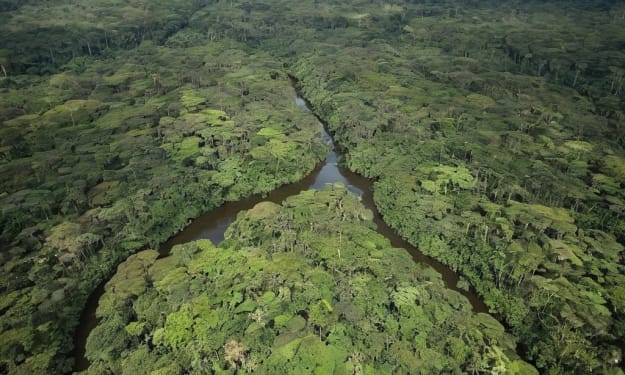The Devastating Impact of Global Warming on Forests and Wildlife in the US
How Climate Change is Threatening the Natural Beauty and Biodiversity of America's Wildlands

Global warming is one of the most pressing environmental issues of our time, and its effects are being felt across the globe. In the United States, the impact of climate change is particularly evident in the nation's forests and wildlife. The country is home to some of the most stunning and diverse ecosystems in the world, but these natural wonders are under threat from the devastating effects of global warming. In this article, we will examine the impact of climate change on forests and wildlife in the US and explore what can be done to mitigate its effects.
The Impact of Climate Change on Forests
Forests cover approximately one-third of the land area of the United States, and they provide vital ecological services, such as regulating the water cycle, preventing soil erosion, and absorbing carbon dioxide. However, these crucial ecosystems are under threat from the effects of climate change. One of the most significant impacts of global warming on forests is the increased frequency and severity of wildfires.
Wildfires have always been a natural occurrence in forests, but climate change has caused them to become more frequent and more intense. Higher temperatures and drought conditions have created a perfect environment for fires to spread rapidly, and the fire season has lengthened. The US Forest Service estimates that wildfires are now burning twice as much land as they were in the 1970s, and this trend is set to continue.
Another impact of climate change on forests is the loss of tree species. As temperatures rise, trees are struggling to adapt to the changing conditions. Many species are already at their climatic limit and cannot survive in the warmer, drier conditions. A study by the US Forest Service found that up to 40% of tree species in the US could be lost by the end of the century if global warming continues at its current rate.
The Impact of Climate Change on Wildlife
The effects of global warming on wildlife are just as severe as they are on forests. Rising temperatures and changes in precipitation patterns are affecting the breeding, feeding, and migration patterns of many species. For example, many migratory birds rely on the timing of the seasons to breed and feed, but as the climate changes, these patterns are becoming disrupted.
Another impact of climate change on wildlife is the loss of habitat. As temperatures rise, many species are being forced to move further north or to higher elevations to find suitable habitat. This can cause a range of problems, including increased competition for resources and decreased genetic diversity within populations.
Perhaps the most significant impact of climate change on wildlife is the threat of extinction. Many species are already endangered due to habitat loss, overhunting, and other human activities. Climate change is adding an extra layer of stress that may push some species over the edge. The polar bear, for example, is at risk of extinction due to the loss of sea ice caused by global warming.
What Can Be Done to Mitigate the Effects of Climate Change?
The impact of climate change on forests and wildlife is severe, but there are steps that can be taken to mitigate its effects. The most important step is to reduce greenhouse gas emissions. This can be achieved through a range of measures, such as investing in renewable energy, improving energy efficiency, and promoting sustainable transportation.
Another important step is to protect and restore natural ecosystems. This can include measures such as reforestation, wetland restoration, and the protection of key habitat areas. By restoring and protecting these ecosystems, we can help to reduce the impact of climate change on wildlife and the environment.
Finally, it is also important to support policies and initiatives that promote sustainability and reduce the impact of human activities on the environment. This can include measures such as sustainable land use practices, reducing waste and pollution, and promoting sustainable agriculture.
Conclusion
The impact of global warming on forests and wildlife in the US is severe, and urgent action is needed to mitigate its effects. From the increased frequency and intensity of wildfires to the loss of tree species and the threat of extinction for many species, the impact of climate change on the natural world is significant. However, by reducing greenhouse gas emissions, protecting and restoring natural ecosystems, and promoting sustainable practices, we can help to preserve the natural beauty and biodiversity of America's wildlands for generations to come.
It is important for individuals, organizations, and governments to work together to address the issue of global warming and take steps to reduce our impact on the environment. By taking action now, we can help to ensure that the forests and wildlife of the US are protected for future generations to enjoy.





Comments
There are no comments for this story
Be the first to respond and start the conversation.